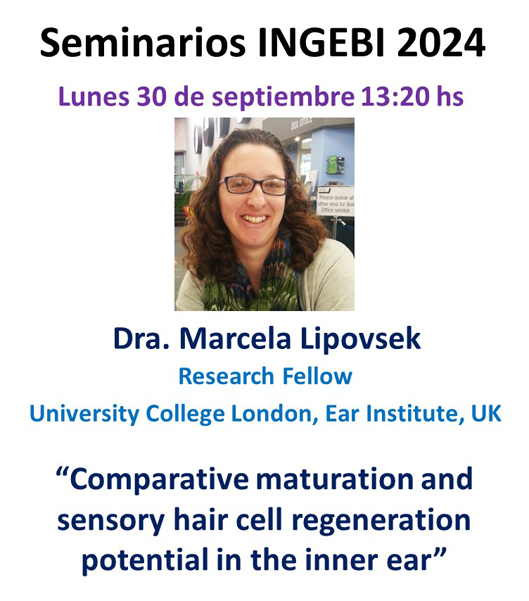Comparative maturation and sensory hair cell regeneration potential in the inner ear
Lunes 30 Septiembre 2024

Resumen:
The inner ears of vertebrates house the peripheral structures of the vestibular and auditory systems. Although responsible for different sensory modalities, head movement and sound detection, the vestibular and auditory end organs share tightly knit developmental and evolutionary paths. Inner ear sensory epithelia are mainly composed of mechanosensory hair cells, that transduce mechanical (head movement or sound) input into electrical signals, surrounded by supporting cells, that provide mechanical, trophic and metabolic support. Auditory hair cell loss is irreversible in adult mammals, while in the vestibular system there is minimal hair cell production throughout life and in response to damage. During early postnatal development, significant hair cell regeneration occurs in response to damage in the vestibular utricle. This is in stark contrast with the widespread regeneration capabilities of avian auditory and vestibular sensory epithelium.
It is generally accepted that the loss of regeneration potential in mammals relates to the degree of differentiation reached by supporting and hair cells, indicating a divergence of the maturation trajectories of mammalian and avian sensory epithelia. To test this hypothesis, we have obtained single cell transcriptomes from mouse and chick vestibular utricles, from embryonic to adult stages. We prepared the sequencing libraries using combinatorial barcoding from densely sampled timepoints. This allowed us to thoroughly identify cell types, subtypes and states, and obtain accurate maturational trajectories. The comparison of the latter, between chicken and mouse samples, is revealing the gene expression patterns and signalling pathways relevant for the loss of hair cell regeneration potential in mammals.
